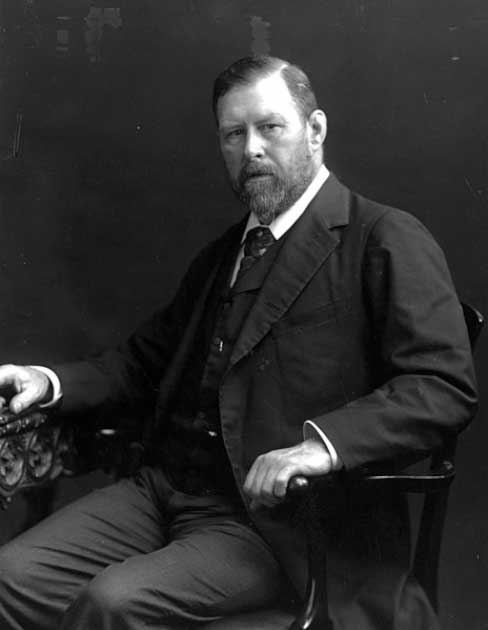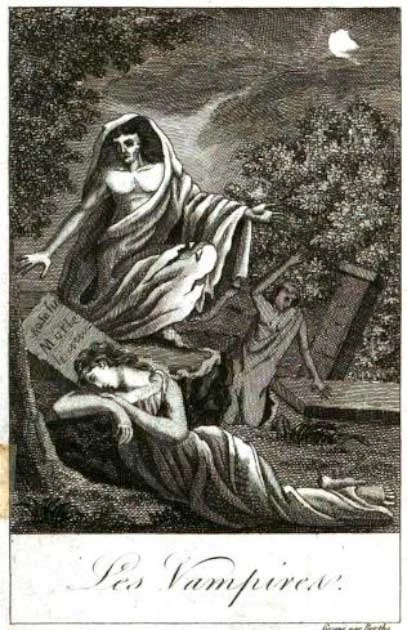We have all been kept awake as children fearing a boogie man or a vampire sneaking into the house. These creatures have been a part of folklore in every country and have been turned into many movies and television shows, which seek to explore this fear.
Many cultures have such legends, but one of the most primeval and outright terrifying of them all comes out of Irish legend. The vampiric or zombie Abhartach (sometimes spelled Avartagh) is however a little different.
Abhartach is the Irish word for dwarf, a very different description of a zombie or a vampire. And the frightening Abhartach may have even been the origins of the character of Count Dracula.
The Legend of the Abhartach
Like many legends, there are two versions of the story of the Abhartach. The first was recorded in the 1870 book The Origins and History of Irish Names of Places by Patrick Weston Joyce.
The legend, as recorded by Joyce, states that The Abhartach was a chieftain in the town of Errigal who was known as a magician and a vicious tyrant. After many years of Abhartach inflicting cruelty on the people, he was killed by a neighborhood chieftain. The accounts vary, and the name of the chieftain is not mentioned or has been attributed to Fionn Mac Cumhail (Finn McCool).
The Abhartach was buried in a “standing position,” a traditional way of burial in Ireland based on Saint Patrick being buried standing in 432 AD. But something was amiss here, and the following day the Abhartach “appeared in his old haunts” and was crueler than ever.

The chieftain returned, killed the Abhartach, and the body was again buried in a standing position. The next day, the Abhartach was again seen walking around, which terrified the entire country.
This time, the chieftain spoke with a druid who advised how to keep the Abhartach underground. The chieftain killed the Abhartach for the third time and buried him upside down to “subdue his magical powers”, preventing his ability to come back from his grave again.
To ensure the Abhartach would not return, a large stone monument (known as a “laght”) was placed over his grave. This seemed to work, for the cruel Abhartach did not return, but remained trapped beneath the stone.
The second version of the Abhartach story is much more gory. According to this legend, the Abhartach was not trapped but would come back from the dead to drink blood. This version also replaces the character of the druid with “an early Christian saint” who describes the Abhartach as the undead or “neamh-mairbh”.
- The Blood Countess of Hungary: Was Elizabeth Báthory a Vampire?
- The Banshee: Celtic Messengers of Death
According to this version, the Abhartach can only be defeated if the chieftain kills him with a wooden sword, buries the Abhartach upside down, and places a large stone on the grave, which thorns must surround.
The Origin of the Abhartach
The story of the Abhartach comes from deep Irish folklore, and while it was first recorded in Joyce’s book the story, like all legends, had been around for centuries. In the 12th century, Ireland belonged to England and the fear of creatures “of the walking dead” was common in England.
These zombies were known as revenants or animated corpses that have returned to life to haunt or harm the living. Along with revenants, the concept and legends about vampires too have been found in many different countries, going back to Biblical times.
Legends and folklores are typically told to children for entertainment but also to instill fear of something that could harm them. A typical example of a folktale like this would be Hansel and Grettle, which warns children when lost it is better to stay where you are than it is to enter the home of a stranger.
In any of these legends, the “monster” or “villain” is typically imaginary, but young children haven’t generally learned to read or have the ability to differentiate what is true and what is fiction. Such cautionary tales serve to keep the children safe until they are old enough to trust their own judgement.
Did the Abhartach Inspire Bram Stoker’s Dracula?
Without having read the novel Dracula, many people can tell you that it is about a vampire “inspired by Vlad the Impaler”. This could have given Stoker the idea of driving a wooden stake through the vampire would kill it.

This assumption is not confirmed however, and the Dracula character appears to draw from several sources. Stoker had never been to Eastern Europe, to places like Wallachia where his novel takes place. Instead of sticking to the usual claim that Vlad the Impaler was Dracula’s inspiration there is another to consider. The claim that the Abhartach inspired Stoker.
Bram Stoker was born in 1847 in Dublin, Ireland. When he was younger he suffered from a medical condition that made him unable to walk, and left the boy bedbound where he read books constantly. Additionally, he worked as a theater critic for a Dublin newspaper that was co-owned by the Irish horror author Sheridan le Fanu.
Le Fanu was the author of the vampire story Carmilla, a novel that was published over twenty years before Stoker published Dracula. There were also books about Wallachia and Moldova as well as figures like Vlad the Impaler and the Blood Countess, Elizabeth Báthory. And could Stoker have had the old Irish legend of the Abhartach in mind, too?
There are certainly similarities between the Abhartach and the character Count Dracula. Both the Abhartach and Dracula are of high birth, and are dead but can re-animate and emerge from a grave or coffin. Both characters terrify the town/country they reside in.
Based on the alternative version of the Abhartach story, both characters can only finally be killed and remain dead after being impaled with a wooden stake or “killed with a sword of wood”. Both the Abhartach and Dracula were known to consume human blood as well.
There is a strong chance that the Abhartach and other fiction books young Stoker read could have had an influence on the development of the Count. Stoker’s vampire seems to come from several places, but the Abhartach is certainly the same species of villain as Dracula.
The Vampire
So much for specific inspiration, but where does the concept of the “vampire” arise? It did not originate in Slavic countries but is found in many cultures’ legends and myths.
The ways one can become a vampire include more than being bitten by a vampire. In many countries, like Greece where the belief in vampires (vrykolakas – the Slavic word for “werewolf”) was so intense that in the 18th and 19th centuries, certain practices were done to prevent a vampire. It isn’t only Greece, many countries have traditional ways one becomes a vampire or how to kill/trap a vampire.

Based on vampire stories from across the globe, here are some ways someone becomes a vampire: being born with a caul (a membrane that can cover the head and face of a newborn), having a tail, more than two nipples, and not being baptized are grounds for vampirism. Violent deaths/suicide, being excommunicated, a woman remaining unwed, or animals bothering a grave are also signs.
The animal aspect stems from Slavic folklore and the practice of leaving a recently deceased in the home or on the floor for three days before burial. Many of these others are clearly due to a fear of the unknown.
Not all vampires are the regal Count Dracula or the handsome Lestat from Anne Rice’s Vampire Chronicles. In Southern Slavic folklore, a vampire can be described as a blob of jelly-like material that rolls through the countryside letting cows out of the pasture.
The Eastern Slavic (Russian) vampires do not consume blood, rather they cause trouble at night by letting cows out of the pasture, and jumping on the top of your house. Next time you hear a scratching or sounds outside, or anything else that goes bump in the night, you might wonder if there is a Slavic vampire on your roof.
Killing vampires also varies across folklore, and there are methods like burying a corpse upside down, as seen in the legend of the Abhartach. Pouring seeds (often mustard seeds) in front of a vampire’s grave causes them to stop and count every seed, preventing their predatory blood consumption.
Another method is exhuming a family member who is thought to be a vampire. Then, the remains are burned down to ash, which is put into a drink. All living family members must drink the vampire’s ashes to prevent any future vampires in the bloodline.
Many cultures place objects in the mouth of the recently deceased, ranging from coins, bricks, communion wafers, and lemons, to stop vampires. Burying or growing bulbs of garlic next to the vampire’s grave or burying communion wafers around the gravesite traps the creature.
Whatever the truth, there are clearly many stories about vampires. Elements like these are why scholars can not definitively say that the character of Count Dracula was based on Vlad the Impaler or the Abhartach. Perhaps it was both, after all.
Top Image: Did Bram Stoker find inspiration for Count Dracula in the Irish Abhartach? Source: Durriya / Adobe Stock.
By Lauren Dillon